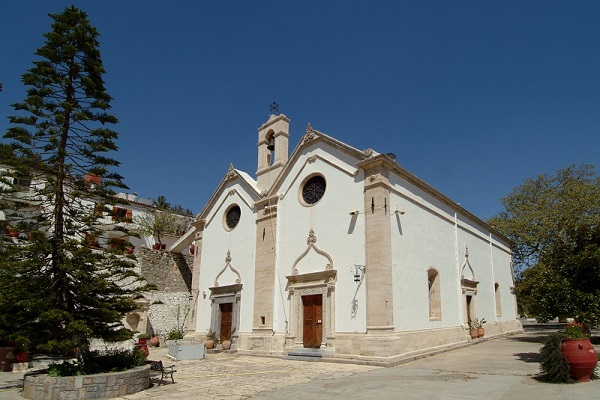The anthropological-ontological basis of the condemnation of wealth in the Gospel
8 February 2017[Previous post: http://bit.ly/2kyb2ij]
Inevitably, human weakness sometimes led to irregularities, such as an accumulation of wealth for personal benefit, client-type relations with those in power at any time, maladministration and much else that was in conflict with the Gospel virtues of poverty, love and charity and a constant awareness of the presence of God. Where such conditions existed, they were criticized and became the objects of withering attacks from monastic circles themselves[12]. And, naturally, it needs to be noted that the Gospel condemnation of wealth had a profound anthropological meaning, rather than a social one. Its prime concern was the liberation of people from the destructive desire for material goods and from the authority of the devil. On a second level, we see that this liberation from enslavement to the things of this world acts beneficially as regards the removal of social injustice. The consistent position of the Patristic tradition has always been that unless the inner person changes first, any attempt at social change is superficial and doomed to fail, irrespective of whatever noble motives it may have had at the beginning. The fundamental desire of all Christians, monastics in the case in point, is for the riches of the Kingdom of Heaven. In order to acquire these, people are taught to unburden themselves of the weight that material wealth imposes[13]. This is the point of view expressed in most texts of the ascetic tradition and the dominant one in the monastic sphere generally, as regards worldly wealth.

From the fourth century until today, many monastic centres have been created. Some have survived from ancient times, others have been lost for a variety of reasons, while yet others are entirely new establishments and are flourishing as living monastic communities. Even though the political, economic and social conditions have altered greatly since then, the manner of organization for monastic coenobitic life has largely remained the same. It might be said that the manner of organization has become more firmly embedded and in general terms has remained the same. What has certainly not changed are the basic principles of poverty, chastity and obedience. These virtues don’t constitute a closed and absolute moral system, but are rather the requirements for a mode of living characterized by quietude, detachment, gradual estrangement from the “old person” through the ascetic path, the abandonment of individual will, the demolition of self-centredness, the continual participation in the sacraments of the Church and union with God and other people through prayer and love. When all of this is observed, the monastic community rises to the challenge of its initial vocation and of the promises of the monastic life. When one of these fails or is evaded, this is when decline sets in and the way is lost.
But what about the necessities of life, especially in today’s world which is much more complicated than it used to be and which creates many more temptations? Monasteries today have very large expenses to meet: all the various expenses of the community; the costly preservation of the buildings and of the cultural heritage in general; hospitality for the host of pilgrims; and charity in a variety of forms. As an indication of this and so that we can understand the size of the problem, I would mention that two years ago, one monastery on the Holy Mountain spent six hundred thousand euros solely on fuel for the heating and lighting of the guests’ quarters. Recent data from journalistic research indicates that monasteries have paid millions in order to obtain the release from prison of people jailed for debt. Large amounts have also been given to the social welfare programmes of the Church of Greece to feed those without means of support. It can readily be understood, then, that the sum total of such expenses is very large indeed. If these are to be met, it stands to reason that the income must be commensurate, which means some economic activity and financial management, the extent of which will depend on the amount of any one monastery’s expenses and income.
(to be continued)






